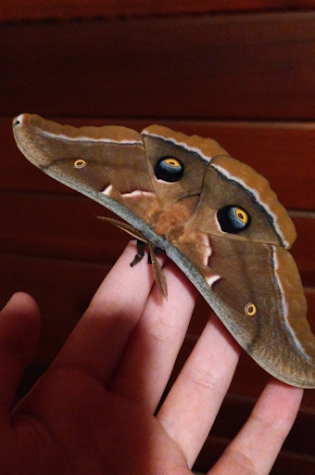Lepidoptera! Click Here to Learn More
When it comes to the differences between moths and butterflies, most people are none the wiser. Recently, the line between butterflies and moths has become more blurred, due to new species of moths or butterflies that tend to have traits of the other. But as you will soon come to know, moths and butterflies are a lot cooler than you thought and have many differences, and hopefully, you’ll learn something new.
Moth or Butterfly?
I generally look at two main factors – the first of which is the antennae. This one’s pretty easy and known by most people, but butterflies have clubbed antennae and moths’ are feathery. Next is also pretty commonly known, and it’s whether it’s diurnal or nocturnal. Most butterflies tend to be out during the day (with exceptions), and most moths tend to come out at night (with exceptions).
Other Fun Differences!
Generally, moths tend to be furrier and chunkier – kind of like little dogs – and butterflies are slimmer and smooth. I personally like moths more than butterflies because they’re really cute. Also, the Lepidoptera family (includes moths and butterflies) is made up of 6-11% butterflies and skippers, and 84-89% moths. While moths tend to have duller colors than butterflies, with that much variety, there are definitely some moths with absolutely striking colors.
Metamorphosis
Cocoon or chrysalis? Moths make cocoons, which have silk coverings, and butterflies make chrysalises, which do not have silk coverings. Another fun fact: moths and butterflies are considered to be holometabolous, which means when they pupate (do metamorphosis) they completely dissolve and become an entirely new thing.

Danger?
If you’re ever worried about being bitten by a moth or a butterfly, don’t be. You probably know they can’t bite or sting, but the way they eat is very cool. Most moths and butterflies have a proboscis, a straw-like appendage that they use to suck up nutrients from whatever they choose to eat (nectar, poop, etc…). However, some moths don’t need to eat at all! For example, the Hercules moth does not eat after it has hatched, living off of the nutrients it ate as a caterpillar. It doesn’t eat as a moth because it doesn’t have a mouth.
Caterpillars
If you see a caterpillar that looks fuzzy or spiky, it’s a good idea to think twice before picking it up or touching it. Some fuzzy caterpillars are perfectly harmless, while some can sting you pretty badly. As a general rule of thumb, most smooth caterpillars are harmless. Caterpillars are super tiny when they hatch, but from the moment they get out, they’re constantly eating and growing bigger and bigger until they pupate. It’s a fascinating process to watch!
Male or Female?
Telling the difference in sex is pretty much the same when it comes to moths and butterflies. When they’re caterpillars, it’s nearly impossible to tell, and if you can tell, it varies from species to species. Male moths tend to have larger, fluffier feathered antennae, and oftentimes are smaller than females. Females tend to have a larger abdomen and wingspan. As is the case in some Lepidoptera families, the female is flightless.
The world is full of amazing insects just waiting to be found. After reading this, hopefully, you’ll take the time to look closer next time you see a moth, butterfly, or caterpillar.
Interested in learning more?
Your donation will support the student journalists of Chamblee High School Blue & Gold. Your contribution will allow us to print editions of our work and cover our annual website hosting costs. Currently, we are working to fund a Halloween satire edition.

Millie Gotsch is a junior, and this is their first year on the staff. In their spare time, they love to play video games, re-watch the same movies over and over again, and take naps. In 5 years, they hope to be in a college of some sort, hopefully still taking naps. "Scott Pilgrim Versus The World" encapsulates their highschool experience.







